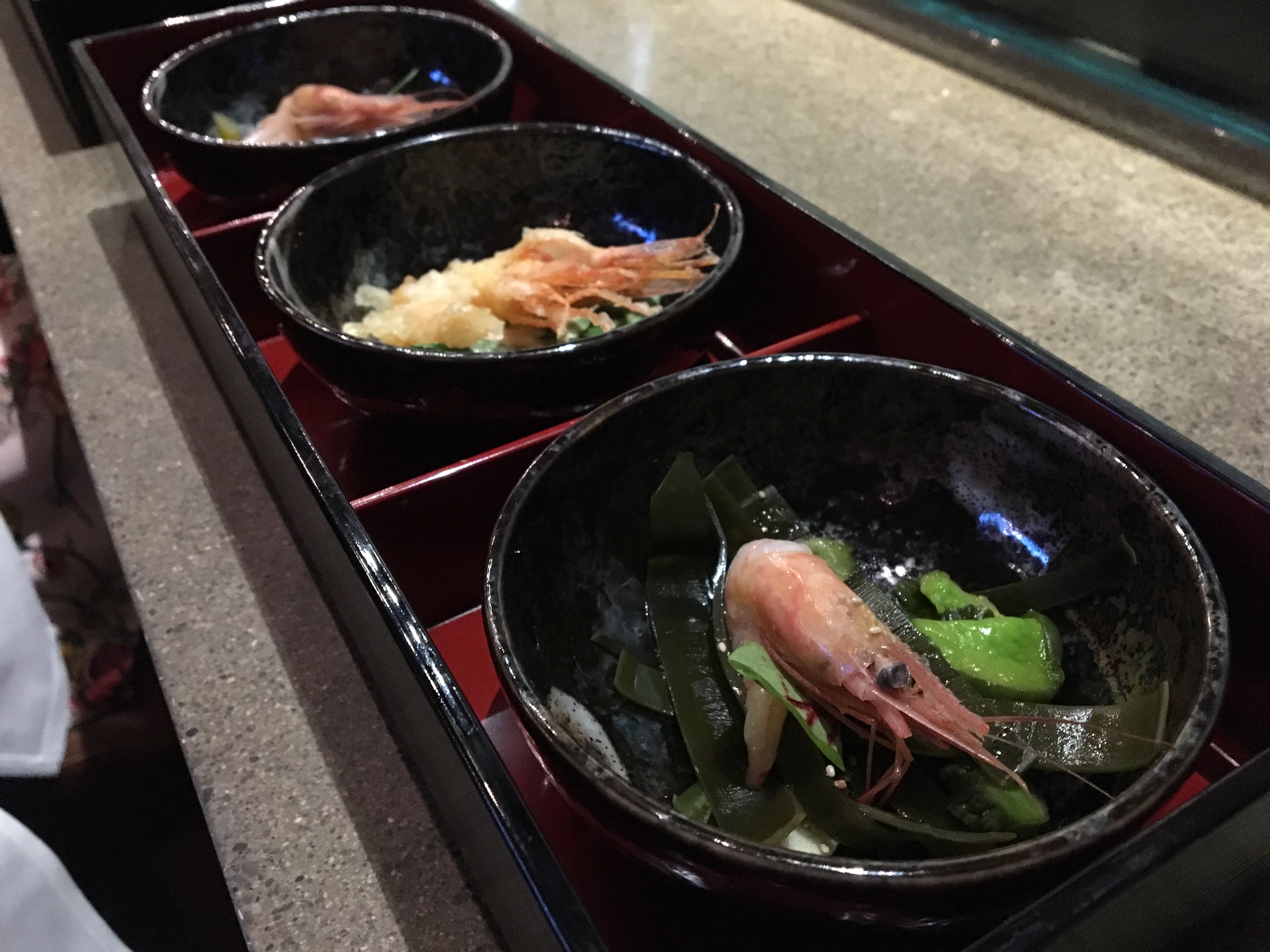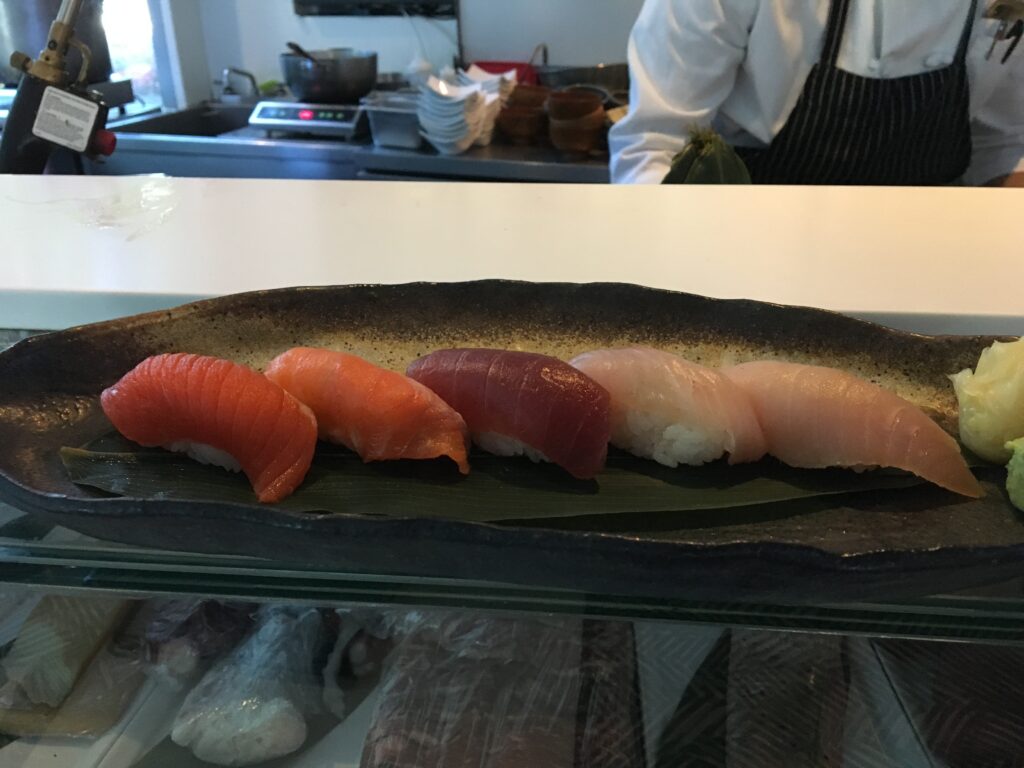The recommendations were coming quickly. In the midst of a visit to Montreal, I had put the bat signal out on Instagram: send sushi recommendations. At that point, I was half convinced that Canada’s second biggest city had little to offer from a sushi perspective beyond the standard cheap chains. But it didn’t take long for suggestions to come – and for a common refrain to emerge.
“Check out Park”
“Go to park please!”
“If you must…Restaurant Park west out of downtown” (editor’s note: I must).
“Park is soooo good”
and simply…
“parkresto.com”
If you were one of those Good Samaritans who sent advice, thank you. You helped me recuperate from something called “Foie Gras Nigiri” that I ate the night before – I’m pretty sure that my very soul is still washing off the grease. And fun fact – not even a 1.5KM (yes, KM) walk to Park from our hotel in the downtown core was enough to remove the general self-loathing that comes from eating at Au Pied de Cochon (google translate that) – the home of the aforementioned fusion catastrophe.
But what about Park? Did my experience live up to the hype? Well, yes and no. Unquestionably, when Chef Park himself is behind the counter (and in the kitchen), the restaurant hums. When I consider what makes a successful sushi restaurant (to my amateur eyes), having a chef (or itamae) who is as involved as Park is in his restaurant is key. It doesn’t hurt that Park’s waza – his technique, his training, his expertise – is impressive, a point I’ll touch more on later.
But when he’s not there, service lags, dishes are forgotten, and preparation suffers. My personal favourite was watching one of the chefs yell at an older-but-maybe-junior chef for a dirty station, justtttt loud enough that the entire sushi counter could hear every condescending word.
But even with the warts, all the reader suggestions were spot on. Based on my (limited) experience, Park seems like a cut above the alternatives. And yes, I haven’t lived in Montreal long enough to try them all, so send the hate mail to info@thesushilegend.com. While you’re doing that, I’ll finish this review.
One of the reasons that Park is so popular is the broad appeal of its menu. To better serve the multitude of tables behind the sushi counter, Park offers both raw and cooked dishes a la carte. The Omakase – which Mrs. Sushi Legend and I both chose – is also on offer, though I’d caution it’s not the standard nigiri-by-nigiri progression that some of you might be used to. Rather, cooked dishes are paired with sushi and sashimi in a 5 course offering (plus dessert). Before I delve into the meal, it’s worth offering a quick disclaimer: Park’s Omakase heavily relies on seasonal ingredients (think Kaiseki), so it’s probable that meals change day to day.
Our first two courses – a small piece of Filet Mignon in broth and vegetables and shrimp/spot prawns three ways – were solid, if unremarkable. Serving anything using three different preparations will always appeal to my sense of adventure, and I could literally eat shrimp heads all day (Park’s are excellent). But if you aren’t as adventurous, a fair warning – it may not be for you (specifically the little guy on the far right).
Next, my personal favourite – seven pieces of nigiri that are literally making me hungry as I stand here typing (seriously, try using a standing desk. It will change your life). King salmon, famous for the buttery texture and Yellowtail belly, full of fat and flavor, melt in your mouth. The Chu Toro, garnished with continental sturgeon roe (aka caviar) and a chive, was a small taste of the quality in the sashimi platter to come. I was also impressed with the preparation for the two pieces of nigiri from the whitefish familia. Most whitefish don’t have overwhelming natural flavor, so chefs prefer to add toppings to the Neta. At Park, the Shima Aji (Jack Mackerel) and Albacore are garnished perfectly.
Anecdotally, I find that most North American sushiya that serve sashimi as part of their omakase will do so before serving nigiri. Park does the opposite, by taking the highlights from the light snack of nigiri and cranking the dial. Did you like your Chu Toro nigiri? Well here’s 4 perfectly cut pieces of Chu Toro sashimi to enjoy. Appreciate the Tuna? Here’s a dozen pieces of Albacore, Akami (Lean Tuna) and Katsuo (Bonito) sashimi. Throughout, Park himself stood behind the sushi bar, impressively (and uniformly) cutting the fish. But in a familiar refrain, when Park leaves his spot, the quality seems to suffer; Exhibit A (or is it B?) was the chef who had decided that slicing fish was a race he had to win. I’ve sat with many great Itamae, all of whom were masters at being deliberate and precise with their cutting movements.
Park’s Omakase is priced at $85+ (ours was $95), which is pricy for Montreal but reasonable for many tourists from more expensive sushi locations. If spending $100 on sushi isn’t for you, I would focus on ordering Park’s strongest offerings – it’s raw fish – assorted a la carte, including the Nigiri Moriawase (12 pieces, $39) or Sashimi Moriawase (18 pieces, $39).
Park restaurant is an open, expansive, square room buttressed with high ceilings and dim lighting. Regardless of where you sit in the restaurant, you’ll have a clear, direct view past the sushi counter into the kitchen. And your ears will have clear contact with that familiar buzz, the one that might be familiar to visitors of any Trendy Restaurant. That said, whether you enjoy sitting at Park – or prefer a more understated room like Shoushin in Toronto – is entirely up to personal preference. Personally, I enjoyed the ambiance of Park.
In the end, it was actually the service that failed to match the food and setting. Far too often we were left alone with finished plates or waiting for upwards of 45 minutes for the next course. Again, you might have a different personal preference, but for us, 2.5 hours for a 5 course tasting menu is far longer than necessary, especially when sushi is involved (you don’t exactly need time to preheat the oven). My concerns about service were only magnified when I realized our drink orders had been forgotten and certain meal components were a complete unknown to the staff. Like many larger restaurants – I’m looking at you Zuma – Park’s service likely suffers from its scope. But unlike Zuma, Park’s food (read: sushi) makes a visit more than recommended, especially if Chef Park himself is onsite.













